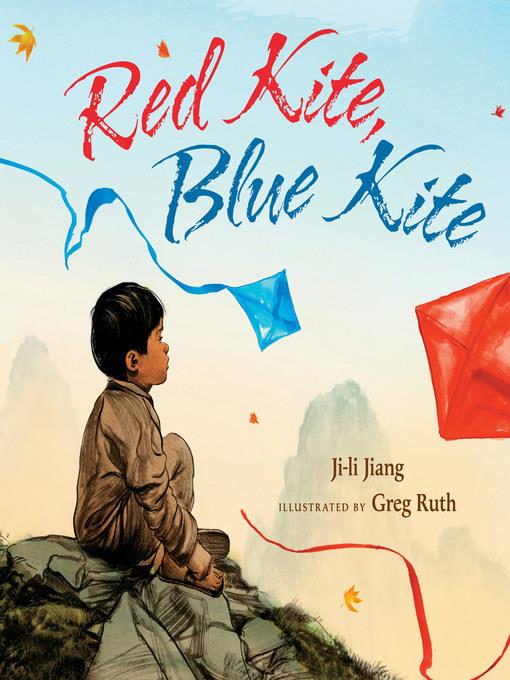
Red Kite, Blue Kite
فرمت کتاب
ebook
تاریخ انتشار
2020
Lexile Score
530
Reading Level
0-2
ATOS
3.3
Interest Level
K-3(LG)
نویسنده
Greg Ruthشابک
9781368004435
- اطلاعات
- نقد و بررسی
- دیدگاه کاربران
نقد و بررسی

November 12, 2012
Ruth (A Pirate’s Guide to First Grade) paints affecting closeups and dramatically lit spreads that ratchet up the tension as Tai Shan endures separation from his
beloved father, Baba, who is imprisoned during China’s Cultural Revolution. The days when Tai Shan and Baba flew their kites joyously from the rooftop are only a memory by the time Tai Shan ends up lodging with Granny Wang. When Baba can no longer visit, he flies his blue kite from the prison camp as a signal for Tai Shan, who flies his red kite for Baba. One day, Baba’s kite doesn’t appear. “Please take me to see Baba,” Tai Shan begs Granny Wang. Ruth shows Baba in his prison uniform, wan and unshaven; he has just enough time to ask Tai Shan to wait for him before his transfer to a distant camp. While Tai Shan and Baba are happily reunited, the anguish of their ordeal—which Jiang (Red Scarf Girl) portrays with scrupulous honesty—makes this introduction to Mao’s China best suited for readers on the older end of the suggested age range. Ages 5–8. Agent: Caryn Wiseman, Andrea Brown Literary Agency.

December 1, 2012
Set during the Cultural Revolution in China, a heartwarming tale of a father and son whose love never stops soaring. Tai Shan and his father, Baba, like to climb to the tippy-top of their roof and fly kites. The two kites--one red and one blue--rise and dive through the sky together. But one day, Baba is taken away to a labor camp, and Tai Shan must stay with a woman called Granny Wang, who is not his grandmother but is kind to him. A thick forest and many miles stand between father and son. Luckily, Baba devises a secret way for them to talk: Every morning, Tai Shan flies his red kite on the hill, and every evening Baba flies his blue one. The kites wave in the wind and whisper messages of comfort until the two are reunited. Ruth's muted primary palette of dusty tans and browns are a stark contrast to the few carefully placed flashes of color. The Red Guards' armbands blaze angrily, yet the two kites soaring in the sky and the bright orange leaves on the trees are spots of hope. Though this is told against the backdrop of a dark part of Chinese history, any child coping with separation from a loved one may find comfort in this story. (author's note) (Picture book. 5-8)
COPYRIGHT(2012) Kirkus Reviews, ALL RIGHTS RESERVED.

January 1, 2013
K-Gr 4-In this picture book, Jiang uses one of the unfortunate circumstances that many children had to endure to make China's Cultural Revolution somewhat understandable for young readers. Tai Shan and Baba, his father, enjoy a special private time together when they fly their kites from the roof of their home. When the revolution begins, Baba is sent to a labor camp but still manages the long walk to visit Tai Shan every Sunday. When those visits are denied, the two communicate by flying their kites-Tai Shan in the morning, Baba at sunset. In this way they remain connected: "Finally, Baba's blue kite sways into the white clouds. The kite waves at me and whispers, 'Here I am, my son.'" When even this is taken from them and before Baba is moved to a different labor camp, he escapes and visits his son. Tai Shan then flies both kites together, clinging to the connection with Baba in his mind. "The red kite follows the blue kite, forward and backward, up and down, like Baba and me, always together, never apart." While the pain of the situation is palpable, so is the sense of hope. The watercolor illustrations capture the emotional tone of the story gracefully, with the scenes from the revolution in sepia and the other background colors in gentle hues, making the brilliant colors of the kites pop. An interesting glimpse into a turbulent time, and a valuable story about love conquering distance.-Grace Oliff, Ann Blanche Smith School, Hillsdale, NJ
Copyright 2013 School Library Journal, LLC Used with permission.

January 1, 2013
Grades 1-3 The author of the acclaimed memoir Red Scarf Girl (1997), based on her childhood survival of China's Cultural Revolution, tells a moving picture-book story of a child in those same harsh times. Tai Shan loves flying kites with his widower father, and the spacious double-page spreads, with dark lines and warm shades of brown and red, show the bond between father and son. Then bad times come, and Baba is sent to a labor camp, while Tai Shan lives with Granny Wang in a nearby village. As secret signals to each other, the boy and his father fly their kites high in the sky. At first, they can meet on weekends, but then Baba is sent far away. True to the small boy's viewpoint, the spare, poetic words capture the action as the kites rise and dive, soaring and hanging together; the emptiness of being apart; and the final, joyful reunion. Even young readers will see the kite flying as a metaphor for freedom. A great choice for classroom sharing and discussion.(Reprinted with permission of Booklist, copyright 2013, American Library Association.)




دیدگاه کاربران